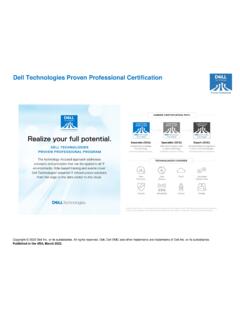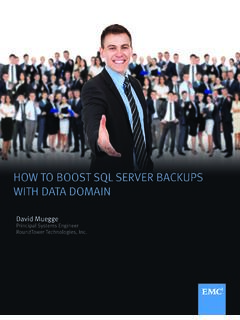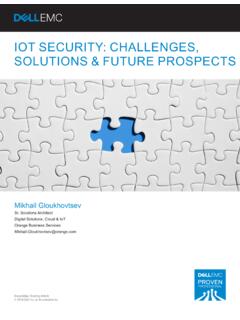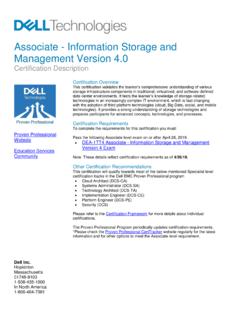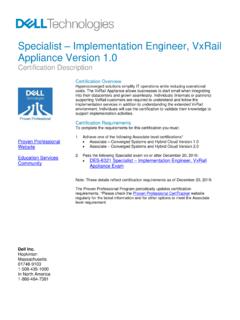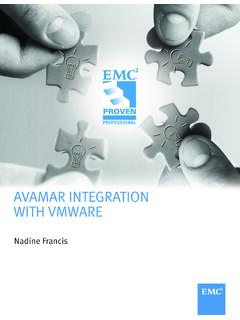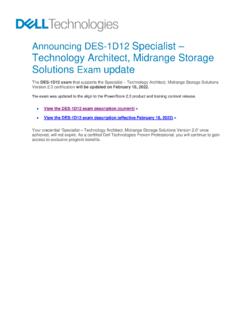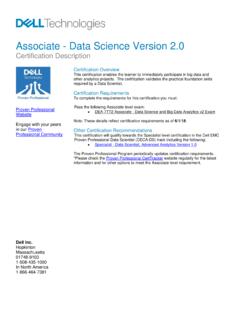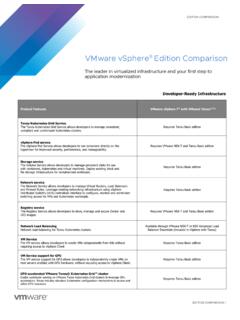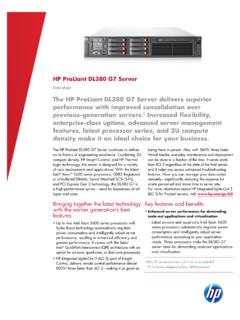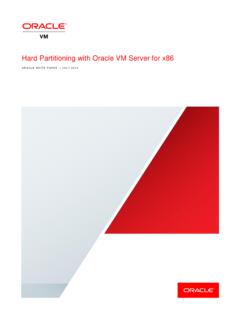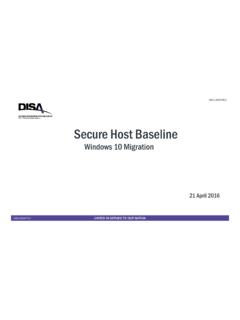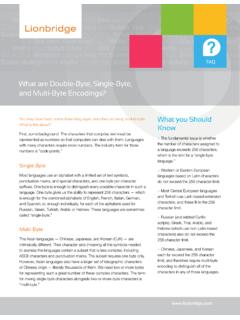Transcription of Detailed Application Migration Process
1 Detailed Application Migration PROCESSR andeep Singh ManagerHCL Technologies Narendra Singh BhatiAssociate DirectorHCL Technologies EMC Proven Professional Knowledge Sharing 2 Table of Contents Overview .. 3 Application Migration Process Flow .. 4 Application Information Discovery .. 5 Application Migration Planning Templates .. 8 Application Complexity .. 10 Migration Methods .. 12 Downtime Agreement .. 14 Pre- Migration and Cutover Templates .. 16 Communication .. 24 Conclusion .. 28 Disclaimer: The views, processes, or methodologies published in this article are those of the authors.
2 They do not necessarily reflect EMC Corporation s views, processes, or methodologies. 2014 EMC Proven Professional Knowledge Sharing 3 Overview Any Migration project can turn out to be a disaster if it is not planned properly in a structured manner. Hence, it becomes essential to clearly identify the requirement, what needs to be captured, plan in a structured way, follow the best practices, processes and then execute it. This Knowledge Sharing article discusses Migration of infrastructure and associated applications from three existing data centres to three new data centres involving a stack of 4000 servers and 3 PB of storage across two data centres with the third data centre being lowest, around 500 servers and 600 TB of data.
3 Processes and best practices followed are same across the 3 Geo s and have yielded positive results. This article focuses on: 1. Application Migration Process Flow. 2. Application Information Discovery 3. Application Migration Planning Templates 4. applications Complexity 5. Migration Methods 6. Downtime Agreement 7. Pre- Migration and Cutover Templates 8. Communication 9. Execution Layer 2014 EMC Proven Professional Knowledge Sharing 4 Application Migration Process Flow This section focuses on the Process flow that is going to be used during the Migration Process .
4 It is important to give customers visibility to it from the start. The customer will gain a comfort level with the Migration by seeing the Process flow as early as possible and making required tweaks required on the basis of feedback. Keep in mind that 10-20% of this Process flow will vary depending upon customer domain (Pharmaceutical, Financial services, Manufacturing, etc.). The diagram below depicts the Application Migration Process flow, detailing phases such as base build, architecture design, Migration methods, Migration planning, and execution. All the blocks are linked in sense or another.
5 While these are high level tasks and need to be Detailed further, it provides visibility to the customer of what Process and steps are going to be followed during the project. 26 Perform Discovery and AnalyzeFinalize End state Architecture and Hardware Requirement (Physical and Virtual/Partition Servers Required) according to Application requirementAgree with the QCS team the test plans for build and migrations to be DC Requirements (Rack, Network, Power etc.) according to hardware requirementDecommission the old InfrastructureHandover the Infrastructure and applications of group1 to BAU teamStart Migrating the applications Group1 and execute QCS test plans post the Pre- Migration checklist and prepare the cutover plans for the Migration groups and get approval from business on cutover the Downtime from the Application teams and business and the Migration dates for the groups the grouping of applications and servers to be moved togetherGet the infrastructure build and qualifiedStart Building Infrastructure (Servers.)
6 Storage etc.) once DC facility is readyStart Building Facility (Racking, Cabling etc.)Prepare Rack Layout DesignFinalize Migration Methods and Tools to be used (VMware Converter, SAN Replication, etc.)Order the HardwareMigrate Group2 and execute QCS test plans post Migration and handover to Group n and execute QCS test plans post Migration and handover to TasksBuild ProcessMigration Process2014 EMC Proven Professional Knowledge Sharing 5 Application Information Discovery Capturing inaccurate information can increase cost and time. Hence, it is very important to be clear on what needs to be captured from the start of the project to make it successful.
7 Enterprise customers often face situations where a large amount of information needs to be collected. For such customers, it makes sense to further break down the information collection into steps or stages. For example: Step/Stage 1: Collect high-level information of current applications and infrastructure. For example, what s out there? What does it run on? How important is it to the business? Does it need to be migrated? This stage helps to achieve a high level view of the current and future state and do some partial hardware ordering at earlier stages to reduce timelines.
8 Example: If the target state is going to be virtualized, some of the hardware, ESX, could be ordered using high level information of the estate in Stage1. Step/Stage 2: Collect Detailed information on relevant applications and servers that need to be migrated. This stage helps when doing Detailed planning. This flexible approach enables completion of a quick initial information gathering exercise, which then lead to a Detailed discovery. This also ensures that subject matter experts are not overwhelmed with requests for information at a single point in time, minimizing the impact on regular business activities.
9 Application Migration projects are complex and there is a lot at stake. It can take a great deal of time to migrate an Application from one data centre to a new data centre. Hence, it is necessary to first carefully identify the key elements or information necessary to be captured for making a project successful. Some of the key elements for achieving it are: a. Existing environment details in terms of configuration for Application and server (CPU, RAM, etc.), Storage, Network, Backup, and Security. b. Key interdependencies between Systems, Application , and Network.
10 C. Critical nature of the systems according to business requirements. d. GxP, SOX, or other compliance-related requirements. e. Downtime associated with each Application . 2014 EMC Proven Professional Knowledge Sharing 6 f. Performance-specific Application requirements. g. Application to Application and Application to middleware or database and Application to server mapping. This is a vital step for creating move groups. h. Cluster details. One must take a cautious approach to determine the level of detail needed when collecting information. Asking for too much detail/information could significantly slow Migration planning at earlier stages.

